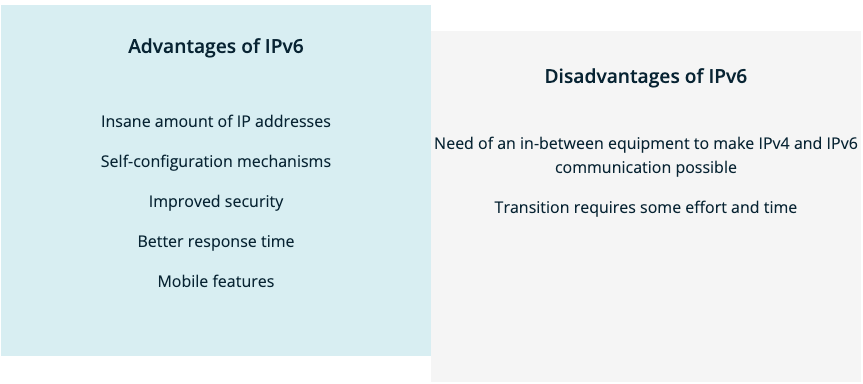Why IPv6 will probably fail
Although, imho it has already failed.
IPv6 was invented to help us resolve the exhaustion of IPv4 which has already occurred in North America and Europe, however, although IPv6 (backup) was launched in 1995 it hasn’t taken off yet, and its adoption has been slow.
Why is the adoption slow?
Well foremost because at least 75% of the world still uses obsolete networking gear which isn’t compatible with IPv6.
This is probably the main reason for the lack of adoption or slow adoption of IPv6.
Google has a really cool statistic about IPv6 (backup) where you will see that for instance, in Europe, except for France (OVH datacenters), Germany and Findland (Hetzner datacenters), UK and Greece (this one is interesting) the IPv6 adoption is well below 30%.
However, what Google measures is the % of traffic reaching their servers and this includes bots and proxies from datacenters and the measurement does not reflect the actual IPv6 adoption which according to estimates is under 30% and keeps slowing down.
On the same statistic you will see that for almost 15 years (1995 to 2010) the IPv6 adoption has not exceeded 1%.
This was obviously due to the hardware limitations.
But hardware is not the main problem since if you put a network on IPv6 you cannot access it from within IPv4 unless except you hook the IPv4 to a 6to4 tunnel, or Teredo as it is commonly known.
Now, there are a bunch of tunnel brokers that provide 6to4 tunnels and there was a page on Wikipedia about them, but someone deleted it recently. It is on the web archive though.
What these tunnel brokers do is assign you an IPv6 subnet, and you then have to configure your router to work with IPv6.
Easier said than done since if your ISP has no support for this kind of setups or if they use obsolete hardware or simply don’t care then you will not be able to set up a 6to4 tunnel.
Now here’s the absurd part about this.
If you, however, have an ISP that’s not brain-dead as most of them you will be able to set up a 6to4 tunnel somewhere inside your network, but definitely not on your router, provider by your ISP.
So you’d have to either purchase a router that works with IPv6 tunnels, a Meraki will probably do, or create a virtual router somewhere inside your network to manage tunnelling of all machines and not just one.
If you do not have a Meraki just, yet then you can do like me and get hooked into the IPv6 subnetting hell in order to make it work.
Moreover, it seems that most ISPs have already chosen to supply residential customers with CG-NAT (backup) instead of IPv6 in order to cope with the IPv4 space exhaust.
This is an obvious lack of interest from ISPs to increase expenses for a marginal gain in latency improvement.
A Belgian ISP, edpnet, lists the advantages and disadvantages (backup) of IPv6:

Let’s check out each and every single one of them:
- Insane amount of IP addresses – yup, true, but most are wasted due to the way subnets are being assigned, although some seem to disagree (backup) by saying that we will never run out of IPv6;
- Self-configuration mechanisms – I really loved this one. Try setting up an IPv6 router behind a 6to4 tunnel and say that again…
- Improved security – The only reason Linux and macOS are not that easy to hack is because they are not as widely used as Windows. The exact same reason applies to IPv4 vs. IPv6. The lack of adoption gives the false impression that IPv6 is more secure. While technically, the stack is much more important as most of the hacks occur at the application layer;
- Better response times – According to the Google statistics, the improvements are less than 1% in terms of latency and this is mostly because 6to4 tunnels seem to increase latency and not decrease it. So take this with a bit of salt;
- Mobile features – I have no idea what they mean by this, but I still have to see a mobile ISP that uses IPv6 instead of CG-NAT.
Now let’s check out the disadvantages of using IPv6 since there’s just two of them:
- The need for 6to4 tunnels to communicate with IPv4 is what makes communication possible, so this fully contradicts their previous claim of better response times;
- Transition requires some effort and time – how about those self-configuration mechanisms?
As some was saying as an argument in favour of assigning /64 subnets of IPv6, the IP protocol will most probably become obsolete before IPv6 reaches full adoption and at the same time I would say that IPv4 will still be around.


